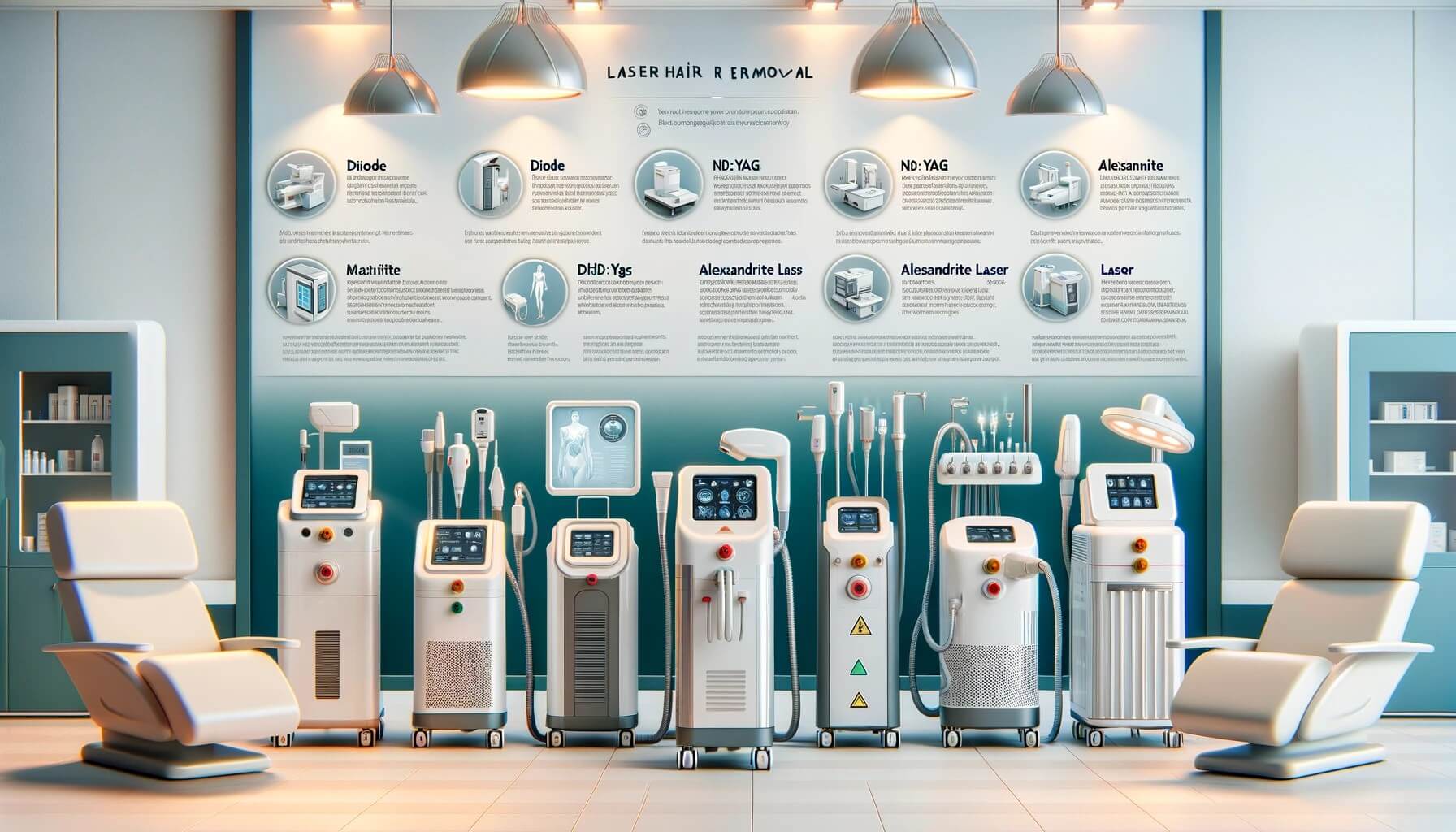Beyond the Myth: Exploring the Reality of Laser Hair Removal
Laser hair removal is one of the most popular cosmetic treatments today. It involves using a laser light beam to permanently eliminate unwanted hair.
Despite its growing popularity, there are still some myths and misconceptions about this treatment. In this article, we will examine 10 myths and truths about laser hair removal so you can better understand what it entails.
1. It’s Permanent, and Hair Doesn’t Grow Back
This is only partially true. Laser hair removal permanently removes hair, but not all of it. Depending on the type of laser, your skin, and the hair, it may require between 6 and 12 sessions to permanently remove most of the hair.
It’s normal for some active hair follicles to remain after the sessions, so occasional growth may occur. This can be addressed with periodic touch-up sessions to maintain the results.
2. It’s Very Painful
This is one of the most widespread myths about laser hair removal. The reality is that modern laser technologies are highly advanced, and the sessions have become virtually painless.
A cooling system is used before and after the laser pulse, which greatly minimizes the sensation of pain. Most patients describe the feeling as a slight discomfort or momentary pinprick.
3. It Doesn’t Work on Blond or Red Hair
In the past, this was true because older lasers didn’t effectively detect light or dark hair. However, modern lasers like diode or Nd:YAG can effectively remove blond or red hair, though it may require more sessions.

4. All Body Areas Can Be Treated
Laser hair removal machines can be used on most areas, but not all. The most commonly treated areas are the armpits, bikini line, legs, back, and chest. However, there are areas with very fine or light hair where it’s not recommended, such as the face or sensitive areas.
5. It’s Better to Shave Before the Session
This is not true. In fact, it’s preferable to let the hair grow for at least 3 or 4 weeks before the laser hair removal session. This allows the laser photodepiler to better focus the light on the hair follicle for more effective destruction. If you need more information, check out our other article on How to Prepare Your Skin for Laser Hair Removal.
6. Only One Session Is Needed
The reality is that multiple sessions are needed to permanently remove hair, usually between 6 and 12 sessions depending on the area. This is because hair has different growth phases, and the laser can only act on hair that is in the active growth phase. Therefore, multiple sessions are necessary to treat all the hair.
7. You Can’t Sunbathe Afterward
It’s true that direct and intense sun exposure should be avoided after a laser session to prevent possible skin discoloration. However, you can gradually sunbathe after about 24-48 hours. It’s ideal to always use high sunscreen, wear a hat, and avoid the central hours of the day.
8. It’s Expensive and Not Worth It
Laser technology in aesthetic equipment has advanced and lowered costs, making it possible to find affordable clinics. The permanent results and long-term savings make it worthwhile. Additionally, many centers offer interest-free financing.
9. It Causes Scars and Bumps
Current lasers are very safe when performed by qualified professionals. There are no risks of scars or bumps if the recommendations are followed properly. However, it’s important to always go to a reputable aesthetic center to ensure the best results.
10. It Doesn’t Work on Dark or Tanned Skin
This is no longer the case. Older lasers were not safe on dark skin due to the risk of burns, but new technology allows for safe treatment of all skin types, even tanned skin. However, it should always be done by experienced professionals.

Frequently Asked Questions About Laser Hair Removal
Below, we answer the most common questions about laser hair removal:
Which Areas Can Be Treated?
Laser hair removal can be safely and effectively performed on armpits, bikini line, legs, arms, back, chest, chin, etc. Areas with very fine hair or very sensitive skin are usually not recommended.
How Many Sessions Are Needed?
It varies from person to person, but typically, between 6 and 12 sessions are needed, with an interval of 4 to 8 weeks between each one. Larger areas like legs may require more sessions.
How Long Does Each Session Last?
The duration varies depending on the area being treated. For example, underarms may take 5 minutes per side, while full legs may take 45 minutes or more.
Does Hair Fall Out Immediately Afterward?
No, the hair doesn’t fall out immediately after the laser session. It gradually falls out in the weeks following as the treated follicle sheds. Visible improvement may be seen after the first session.
Can You Remove Hair Between Sessions?
Ideally, you should not remove hair in the treated area between sessions and allow the hair to grow so that it can be more effectively treated in the next session. However, shaving can be done if necessary, at least 3 weeks before the next appointment.
How Long Do the Results Last?
With complete sessions, you can achieve a permanent reduction in hair by 85-90%. To maintain these results, annual or biannual touch-up sessions are recommended.
How to Choose a Good Laser Center?
The most important thing is that they have advanced laser technology and work with highly experienced medical professionals in laser treatments. They should also offer a free initial consultation.
Does Laser Hair Removal Hurt?
Thanks to the built-in cooling technology in the equipment, the sensation is one of slight, bearable discomfort. In more sensitive areas, a topical anesthetic cream can be applied for added comfort.
Is Laser Hair Removal Safe for Dark Skin?
Yes, modern lasers like diode or Nd:YAG are safe for darker or more melanin-rich skin because they allow for proper parameter adjustments for this skin type. However, always seek the expertise of experienced professionals.
As you can see, advances in lasers now allow for safe, effective, and comfortable laser hair removal for most people looking to permanently eliminate unwanted hair, dispelling many of the myths surrounding this treatment.



